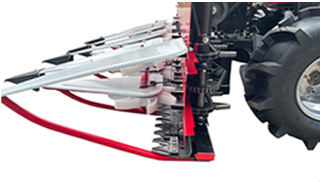Sep . 25, 2024 15:41 Back to list
Methods for Accurately Measuring Brake Drums for Optimal Vehicle Performance
How to Measure Brake Drums A Comprehensive Guide
Measuring brake drums is an essential task for maintaining your vehicle’s braking system. It's crucial for ensuring that your brakes function correctly and safely. Whether you're a DIY enthusiast or a professional mechanic, understanding how to accurately measure brake drums can help you avoid costly mistakes and enhance your vehicle’s performance.
Understanding Brake Drums
Brake drums are cylindrical components that work with brake shoes to create friction, which slows down or stops a vehicle. Over time, these drums can wear out, warp, or become damaged due to heat and friction. Regularly measuring your brake drums helps determine whether they need to be resurfaced or replaced.
Tools You’ll Need
Before you start, gather the following tools 1. A caliper or micrometer 2. A brake drum gauge 3. A torque wrench 4. A measuring tape 5. Safety gear (gloves and goggles)
Step-by-Step Process
1. Preparation Ensure your vehicle is on a flat surface and secure with wheel chocks. Loosen the lug nuts of the wheel covering the brake drum you'll measure, then jack up the vehicle and remove the wheel.
how to measure brake drums

2. Inspect the Brake Drum Before taking measurements, visually inspect the drum for any obvious signs of damage, cracks, or deep grooves. If these are present, the drum might require replacement regardless of measurements.
3. Measure the Diameter Use a caliper or micrometer to measure the drum's diameter at several points around its surface. For accuracy, measure at least two locations. The average measurement will give you the current diameter. Be sure to note this down.
4. Check for Uneven Wear If the drum is worn unevenly, you might notice different diameter measurements at various points. If there’s more than a 0.030-inch difference, it’s likely that the drum is warped and needs replacement.
5. Measure the Drum Thickness Using the brake drum gauge, measure the thickness of the drum. This measurement is crucial, as each drum has a minimum thickness specification. If your measurement is below this specification, the drum is no longer safe for use.
6. Double-Check with Manufacturer Specifications Consult your vehicle’s service manual for the recommended measurements. Compare your findings with these specifications to determine if your brake drums are within acceptable limits.
7. Reinstallation If the drum is in good condition, reinstall it along with the wheel. Ensure to torque the lug nuts to the manufacturer's specifications.
Conclusion
Measuring brake drums is a straightforward process that plays a critical role in your vehicle’s safety and performance. By regularly checking the condition of your brake drums, you can prevent brake failure and enhance your driving experience. Always consult your vehicle manual and, when in doubt, seek assistance from a professional mechanic. Regular maintenance is key to safe driving!
-
ROR Web Development: Build Fast, Scalable, Secure Apps
NewsAug.17,2025
-
Scania Brake Drums: OEM Quality for Optimal Safety & Durability
NewsAug.16,2025
-
R.V.I: Advanced Remote Visual Inspection for Precision
NewsAug.15,2025
-
Discover HYUNDA: Innovative Vehicles, Equipment & Solutions
NewsAug.14,2025
-
R.V.I: Unlock Advanced Insights & Real-time Performance
NewsAug.13,2025
-
Kamaz Brake Drum: Durable & Reliable for Heavy Duty Trucks
NewsAug.12,2025
